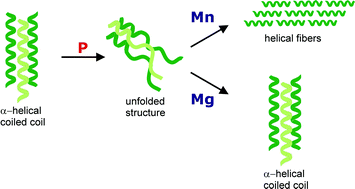Towards understanding secondary structure transitions: phosphorylation and metal coordination in model peptides†
Abstract
Secondary structure transitions are important modulators of

* Corresponding authors
a
Institut für Chemie und Biochemie, Freie Universität Berlin, Takustr. 3, Germany
E-mail:
koksch@chemie.fu-berlin.de, hackenbe@chemie.fu-berlin.de
Fax: +49-30-838-55644
Tel: +49-30-838-55344
Secondary structure transitions are important modulators of

 Please wait while we load your content...
Something went wrong. Try again?
Please wait while we load your content...
Something went wrong. Try again?
M. Broncel, S. C. Wagner, K. Paul, C. P. R. Hackenberger and B. Koksch, Org. Biomol. Chem., 2010, 8, 2575 DOI: 10.1039/C001458C
To request permission to reproduce material from this article, please go to the Copyright Clearance Center request page.
If you are an author contributing to an RSC publication, you do not need to request permission provided correct acknowledgement is given.
If you are the author of this article, you do not need to request permission to reproduce figures and diagrams provided correct acknowledgement is given. If you want to reproduce the whole article in a third-party publication (excluding your thesis/dissertation for which permission is not required) please go to the Copyright Clearance Center request page.
Read more about how to correctly acknowledge RSC content.
 Fetching data from CrossRef.
Fetching data from CrossRef.
This may take some time to load.
Loading related content
